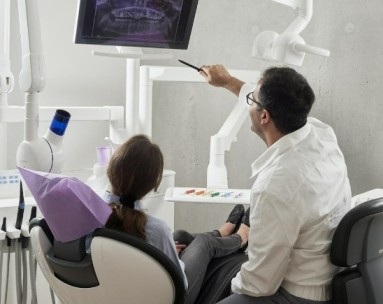
From public transport to the arts, Medellín is known for many things. One of those things is the medical arena, in which Medellín has excelled. In fact, it has eight of the top 44 hospitals in Latin America; these hospitals are known for their specializations in organ transplants, cancer treatments, plastic surgeries, and more. Medellin has become a go-to destination for medical tourism. This standard of excellence didn’t happen overnight, of course. The foundations were laid in 1993, when the right to universal healthcare was added to the Colombian Constitution. At that time, Medellín was a hotspot for gang activity and violent crime; it would be a while before the city was known as the medical capital of Latin America. However, the city has since transformed itself in many ways, and people now travel from all over the world to receive medical care in Medellín.
Medellín healthcare statistics
The city’s healthcare system is quite advanced, which has led to plenty of international acclaim. Here are some quick facts about healthcare in Medellín:
- The San Vicente Foundation University Hospital in Medellín was awarded the LEED certification’s Silver Category. Apart from select US hospitals, it’s the only hospital in the world to receive this certification.
- Hospitals aren’t the only contributors to Medellín’s excellence in the medical field; some of the city’s universities have been recognized for advanced medical research. These include UPB University, CES University, and the University of Antioquia.
- Medellín’s highest-rated hospital (according to America Economia magazine) is the Pablo Tobón Uribe Hospital, ranking at #7 out of the top 100 hospitals in Latin America.
- Major surgeries in Medellín can cost up to 80% less than comparable procedures in the US, while still being performed by highly trained surgeons in cutting-edge facilities.
- Medellín’s medical advancements have helped Colombia’s healthcare system reach a #22 ranking according to the WHO. For comparison, Sweden is ranked at #23, Germany at #25, Canada at #30, and the US at #37.
Importation of medical devices to Colombia
After Brazil and Mexico, Colombia represents the largest market for medical devices in Latin America. Since domestic production of medical devices focuses on lower-tech products, most of the advanced medical equipment in Medellín hospitals is imported from China and the US. In 2020, Colombia spent $270 million on medical devices from China, and $239.6 million on medical devices from the US; in total, this represented about 50% of Colombia’s total spending on medical device imports. In recent years, the medical device market in Colombia has made up about 5% of the country’s spending on healthcare, with a significant portion of those devices being destined for Medellín hospitals.
Hospitals that have made Medellín the medical capital of Latin America
Medellín isn’t just a destination for Colombians who are seeking top-notch medical care; it’s also popular with international patients. They come from all over the world to Medellín, some of them for life-saving procedures, others for transformative plastic surgery. But which hospitals do they go to? These are some of the best hospitals in Medellín, the medical capital of Latin America.
-
Pablo Tobón Uribe Hospital
This hospital is consistently ranked #1 in Medellín. It’s a general hospital, but also has several specializations that include pediatrics, bariatric surgery, renal care, and cancer care. Located in the Roblado neighborhood, this is a private non-profit hospital that’s been in operation since 1970. There’s plenty of room for patients here, with 650 beds, plus another 70+ spots in the ICU.
In addition to practicing medicine, the Pablo Tobón Uribe hospital also has training programs for students on topics like microbiology, psychology, nutrition, nursing, and general medicine. International patients who speak English are always happy to find that this hospital makes extensive accommodations for them. These include an English-language website, some English-speaking doctors, and trained medical interpreters (in several different languages). The hospital doesn’t just accommodate English-speakers, though; it has an entire department that’s devoted to communicating with patients’ doctors in their home countries, plus handling insurance matters when applicable.
-
Medellín General Hospital
This hospital started out with 20 beds in 1942, and has since expanded to more than 440 beds, with eight operating rooms. As a public hospital, it’s backed by Medellín’s municipal government. Inpatient services are available in many different specialties, including:
- Pediatrics
- Orthopedics
- Oncology
- Neurosurgery
- Neurology
- Pulmonology
- Internal medicine
- Obstetrics and gynecology
- Organ transplants
- Plastic surgery
- General surgery
- Cardiology
As a public hospital, the Medellín General Hospital may have longer lines for emergency care compared to some other hospitals. However, this facility still adheres to the same high quality of care that Medellín is known for.
Official website: https://academiahgm.com
-
San Vicente Foundation University Hospital
As the second-best hospital in Medellín, the San Vincente Foundation is usually at least 90% occupied by patients. Since its beginning in 1913, it’s grown to have 662 beds in the general ward, plus over 45 beds in the ICU. Its 15 operating rooms see more than 16,000 surgical procedures each year, which make up over half of the hospital’s 25,000 annual patients.
Aside from being a general hospital, San Vicente has four different specialty centers.
- The Organ and Tissue Transplant Center, which has helped put Medellín on the map for recipients of organ transplants
- The Digestive Diseases Center
- The Cardiopulmonary and Peripheral Vascular Center
- The Infant Hospital, which was opened in 1961
San Vicente doctors have performed several notable transplant surgeries, including the world’s first trachea transplant. They’ve also completed Colombia’s first transplants for the larynx, esophagus, small intestine, liver, and kidney. In total, this hospital has completed more than 4,000 organ transplants, which represents about 90% of all transplants performed in Medellín.
International patients can stay close to the Medellín airport by receiving treatment at San Vicente’s Rio Negro healthcare complex. This location offers the same specializations as the main hospital, and the same levels of care and expertise as well.
Official website: https://www.sanvicentefundacion.com/
It’s clear why Medellín is the medical capital of Latin America
Medellín’s healthcare system doesn’t just serve regional inhabitants; it’s also popular for medical tourism and retirees. Thanks to the city’s focus on research and the way it prioritizes advanced medical procedures, it’s no surprise that Medellín is the medical capital of Latin America.




